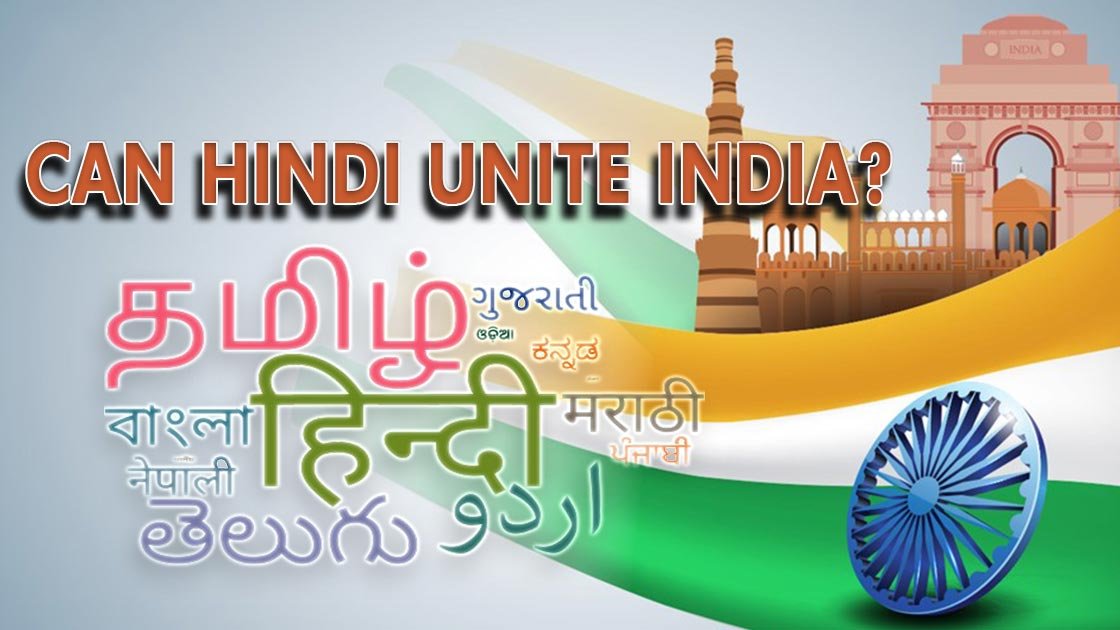Origin of Hindi language.
Like other Indo-Aryan languages, Hindi is a direct descendant of an early form of Vedic Sanskrit, through Sauraseni Prakrit and Śauraseni Apabhraṃśa which emerged in the 7th century CE. Modern Standard Hindi is based on the Khariboli dialect, the vernacular of Delhi and the surrounding region, which came to replace earlier prestige dialects such as Awadhi, Maithili, and Braj.
On 14 September 1949, the Constituent Assembly of India adopted Hindi written in the Devanagari script as the official language of the Republic of India replacing Urdu’s previous usage in British India.
Consequences of creating monolingual country.
In the country which is diverse geographically and thus in its cultures, rituals and language, imposing monolingual identity is debatable. India was colonised by linguistically challenged islanders who could not think beyond one language. This idea is not in tune with India’s history, culture and civilization. India is a multilingual society . Speaking more than one language comes naturally to Indian people. The Indian Constitution includes 22 language in the 8th Schedule. Each language carries equal importance.
Nearly 35% of people migrate daily for work at present. Therefore Indian cities must be recognised as multilingual cities. Creation of monolingual cities would prevent migration of people for work and reduce the ease of capital flow. For example- After 15-20 years, a person from Bihar would find it difficult to work in Karnataka where Kannada was introduced as monolingual language. Similarly in Maharashtra making Marathi compulsory all over the State including Mumbai is not a good idea. Therefore a new form of language identity has to be conceptualised for Indian States.
All tribal languages are rapidly disappearing in the country. This is because there are not enough livelihood opportunities in those languages. Livelihood opportunities for tribals are diminishing because their languages are not encouraged and people are getting assimilated in some larger language. This causes huge cultural and economic loss.
Is there any prospect for Hindi to be accepted pan India?
The people of South India hold strongly to the idea that they are Dravidian language speakers. Hindi belongs to the Indo- European languages and is no less foreign in their reckoning than English is to them. It is based purely on the principle that privileging any one Indian language would be discriminatory.
History is the proof of the adoption of the language of societies that are the object of admiration by the natives. French was the language of the Tsarist court in Russia because of the political, cultural and scientific advances made in France. Therefore for Hindi to be adopted by the people of southern India today they must hold a similar view of the society of their northern cousins.
What are the other ways by which India can be united if not by a language?
To make Indian people feel united, it has to be on social and emotional level. We might observe several instances when every Indian people share the same feeling. The stakeholders i.e. political leaders must take the responsibility of making Indian people feel united 365 days in a year.
- India becomes one on the issue of national security and with respect to army personnel serving at the border.
- India shares same emotions on the matter of ISRO missions. ISRO missions will go a long way to dispel regional feelings and support pan nationalism. We have observed this in the case of Mars orbiter Mission success that was cherished by every Indian and in the case of Chandrayan2 every Indian shared the feelings of pride, excitement, disappointment and hope.
- Sanskrit can be used to make Indian people feel one and also for preparing them for future needs. It is because Sanskrit is not a language of past but a language of future. NASA has found that Sanskrit language is the only language which is best for computer programming. NASA has started “Mission Sanskrit”. Sanskrit is expected to be used as computer programming language by 2035. Therefore, introducing Sanskrit will help in building a skilled work force in India.
- The concepts of Aryans and Dravidians has to be done away. Indian people seem to always divide themselves on this concept.
- The practice of cultural exchange and promotion of intra country tourism would help in uniting India. Festivals like Onam, Chhat, Bathukama should be celebrated all over India.
India is united in its diversity. Diversity is a great philosophical idea and should never be seen as a cultural burden.
